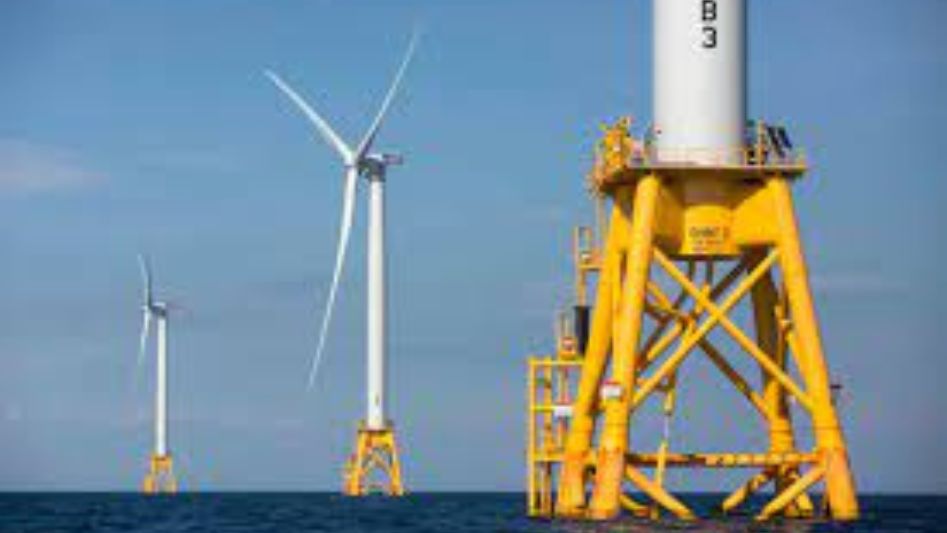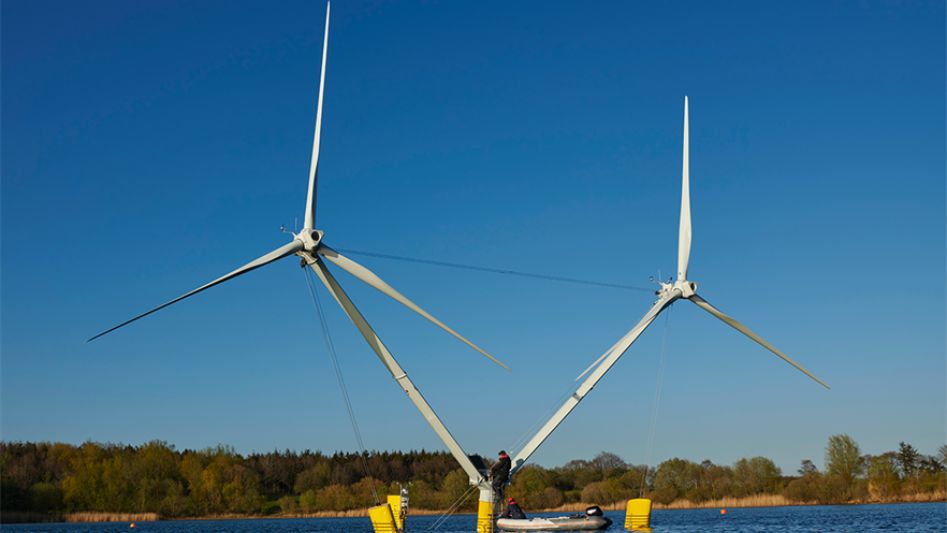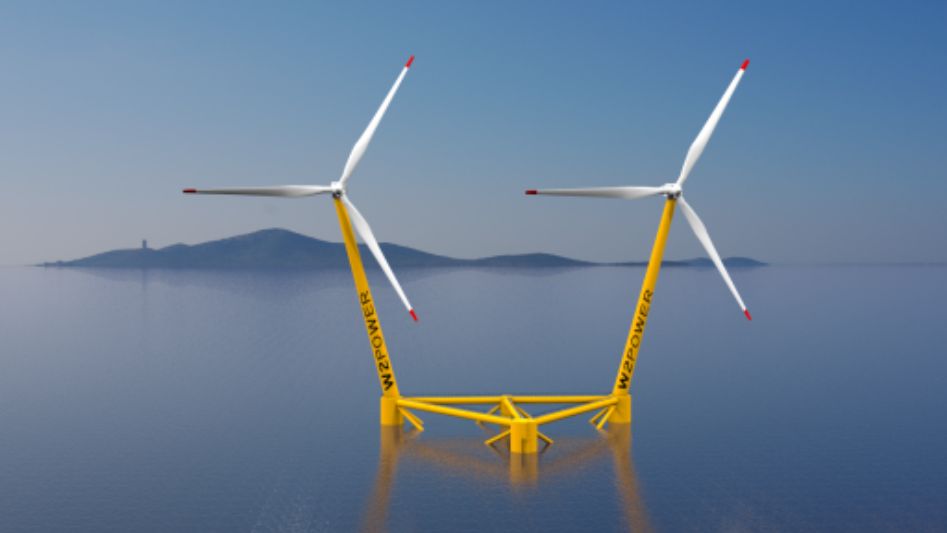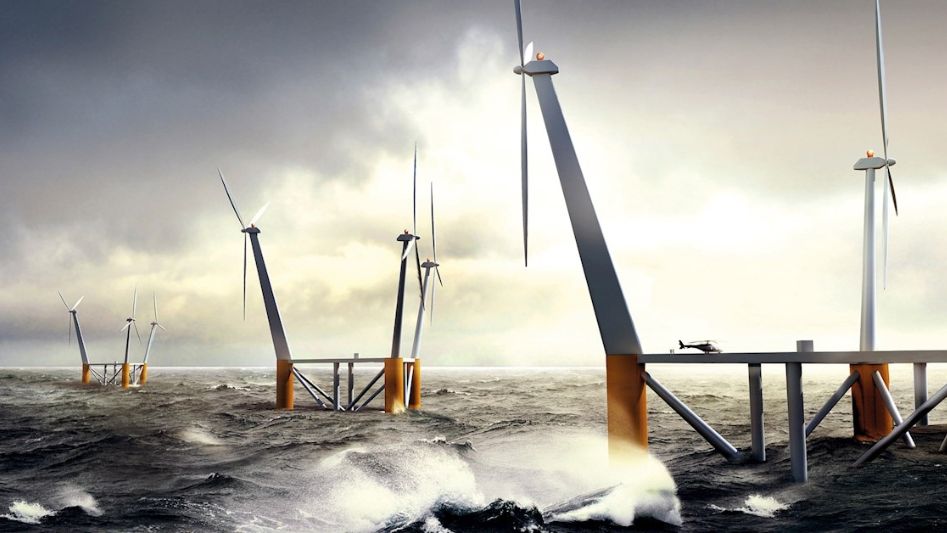A lack of wind is a problem for wind farms, but did you know too much wind is equally as problematic? A new design of floating offshore Multi-Turbine hopes to change that.
Table Of Content
Within the next thirty years, renewable energy like wind power might provide enough electricity to power the whole planet. However, building wind farms in deep oceans, where 80% of the world’s offshore wind blows, is difficult.An innovative wind turbine design has the potential to start making a difference.
We invite you to read: “Wind Energy Turbines History”

The Norwegian firm Wind Catching Systems is working on a multi-turbine wind farm technology that can float and create five times as much electricity per year as the biggest single wind turbine in the world. A revolutionary new layout reimagines the function and appearance of wind farms, which is what allows for this dramatic improvement in efficiency.
In contrast to the standard wind turbine, which consists of a single pole and three enormous blades, the so-called Wind Catcher has a square grid of more than a hundred individual blades. The device is located on a floating platform that is attached to the ocean bottom, and it is 1,000 feet tall, making it more than three times as tall as a typical wind turbine. The business is working on plans to construct a prototype in 2019. If it works, the wind catchers might completely change how wind energy is collected.
Traditional wind farms, according to Ole Heggheim, CEO of Wind Catching Systems, are modeled after traditional Dutch windmills. These wind farms are effective on land, but others have asked, “Why try to apply the same principles to the water?”
There has been a recent surge in interest in offshore wind farms, with 162 now operational and another 26 planned, mostly in China and the United Kingdom. However, due to the need to drive each turbine into the seafloor, installation is limited to depths of no more than 200 feet. Since winds are stronger farther out to sea, the performance potential of wind farms is limited by the fact that they can’t be erected more than around 20 miles from shore.
This is where floating wind turbines come in handy.The world’s first floating wind farm, Hywind, launched in 2017, roughly 25 miles off the coast of Aberdeen, Scotland. The wind farm contains six floating wind turbines that are inserted in a buoyant cylinder loaded with substantial ballast to make it float vertically. Because they’re merely attached to the bottom with large mooring lines, they may operate in seas more than 3,000 feet deep.
Hywind is powering roughly 36,000 British households, and it has already surpassed U.K. records for energy production. Wind Catching Systems was introduced the same year Hywind opened.They say that between 80,000 and 100,000 European homes might be powered by a single device. In the most favorable circumstances, when the wind is at its fiercest, a single wind-catching device may generate as much as 400 terawatt-hours of electricity. Contrast that with the maximum output of the most powerful commercially available wind turbine, which is 80 GWh.
This huge disparity has several root causes. First, the rotor blades of the Wind Catcher are subjected to greater wind speeds since the structure is taller (almost as tall as the Eiffel Tower). In addition, smaller blades are more efficient. Heggheim notes that typical turbines are 120 feet long and normally max out at a given wind speed. The Wind Catcher’s blades are 50 feet long and can do more revolutions per minute; therefore, they can produce more energy.
We invite you to read: “What Is A Helical Wind Turbine?”

The whole system is less complicated to make, construct, and keep up with since the blades can be made smaller. Heggheim claims that its design lifetime is 50 years, making it twice as long-lasting as conventional wind turbines, and that an integrated elevator system will make it simple to repair any worn components or conduct routine inspections. “If you have one single turbine and you need to replace the blade, you have to halt the entire operation,” explains Ronny Karlsen, the company’s CFO. There are 126 separate turbines, so just one will need to be shut down for blade replacement.
Much of the system may be reused after its useful life has ended. Many classical wind turbines have reached the end of their useful lives after the first large wave of wind power in the 1990s. Blades the size of a Boeing 747 wing are building up in landfills. Windcatcher blades are smaller and constructed of aluminum, which can be recycled in contrast to the non-recyclable fiberglass used in bigger turbines. Heggheim claims that you can just melt things down and make new ones.
The North Sea is where a prototype is anticipated to be constructed (in Norway or the U.K.). The next potential markets for the firm are the states of California and Japan. According to Karlsen, “they have strong wind resources along the coast,” and “the governments are receptive and have begun to give land for projects.” For anyone concerned about the potential threat to migratory birds, Heggheim assures us that the structure will be equipped with bird radars that emit brief pulses of signal to help avoid collisions. He claims that since the apartments would be located so far from the shore, no coastal birds would be at risk.
Conclusion
Scotland’s historically gusty climate makes it a prime spot to make the most of wind technology, but offshore wind is becoming more popular abroad. 4C Offshore reports that 162 offshore wind farm projects are now in the development stages around the United States. Two wind farms, however, are fully functional at the present time. However, in an effort to reduce the high cost of new construction, US enterprises have been exploring the use of floating wind farms since 2013, and a dedicated training center for offshore engineers has been set up in New York State.
We invite you to read: “The Future of Wind Turbines? No Blades”
FAQ
When it comes to generating electricity from the wind, what kind of turbine is best?
The most popular kind of horizontal axis wind turbine has three blades, since this is the most effective design.
Do you know whether wind turbines that can float on water exist?
Three floating wind turbines will be up and running by 2021. The first is Equinor ASA’s 30 MW Hywind Scotland, which utilizes five floating turbines and went live in October 2017.
Can wind farms be constructed on water?
However, despite the fact that floating wind farms are possible from a scientific standpoint, they are not financially sustainable.
You May Also Like
- Wind Turbines & Insect Wings: Can We Achieve Higher Efficiency?
- Wind Turbines Speed: Are They Supposed to Spin Fast All The Time?
- Windmill vs. Wind Turbine: What’s the Difference?
- What Are Wind Turbine Blades Made Of? Could They Be Recycled?
- What Is A Vertical Axis Wind Turbine (VAWT)?


